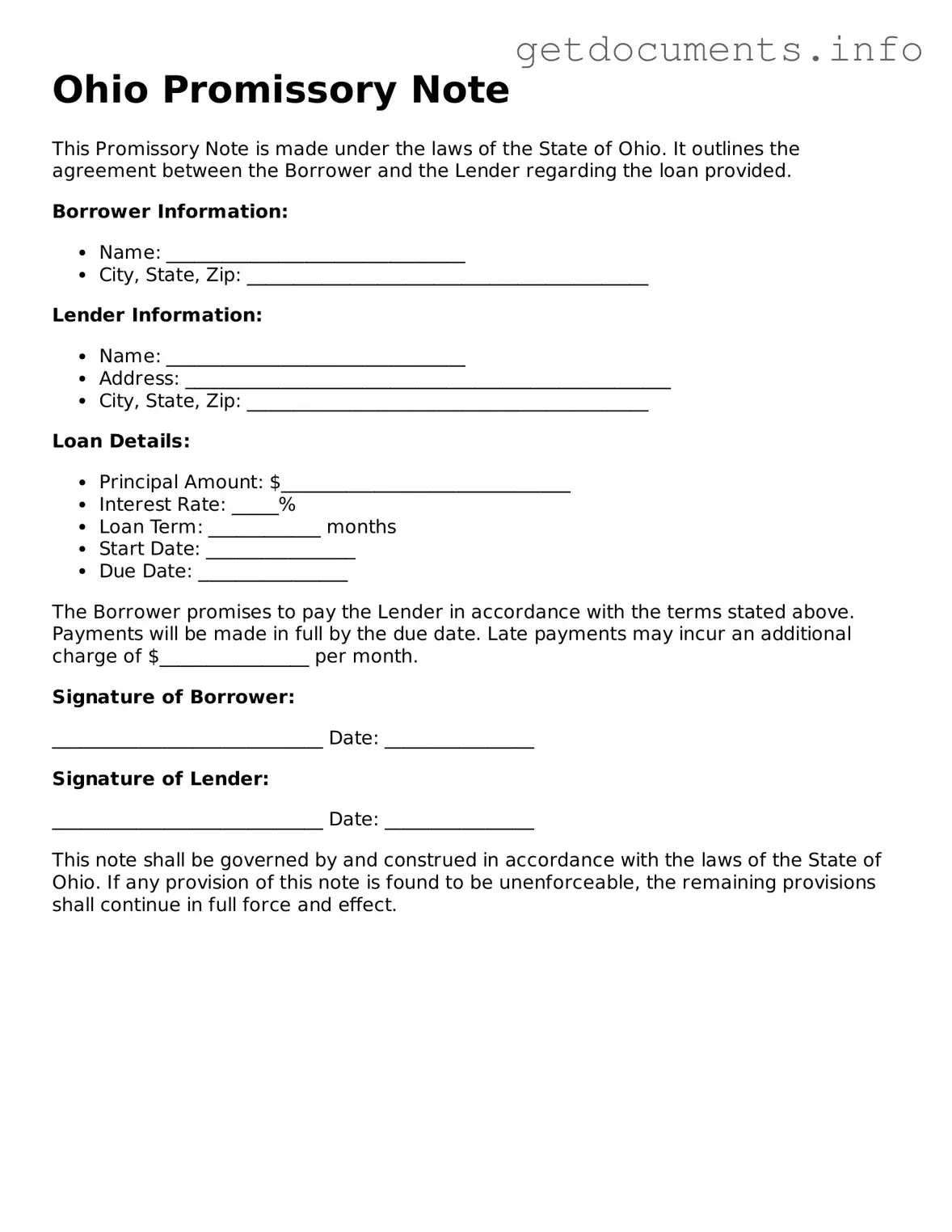Free Promissory Note Template for Ohio
A promissory note is a written promise to pay a specified amount of money to a designated person or entity at a defined time. In Ohio, this form serves as a crucial document for individuals and businesses engaging in lending and borrowing transactions. Understanding how to properly fill out this form is essential for ensuring legal clarity and protection for all parties involved.
To get started, fill out the Ohio Promissory Note form by clicking the button below.
Access Promissory Note Editor
